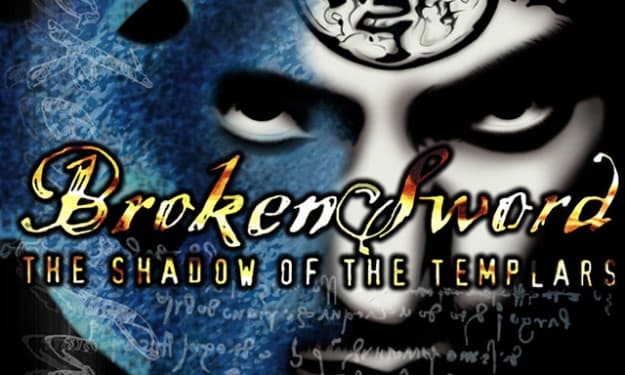Samurai Warriors 5 Review
It is one of the most popular power fantasies in videogames to be able to suit up and play as a Samurai

It is one of the most popular power fantasies in videogames to be able to suit up and play as a Samurai. While there are many games that allow you play as historical characters, how about slashing whole armies while playing as one of the legendary, historical, legendary Samurai?
What do you mean by historical inaccuracy?
If you're up for anime quality battlefield-fu or are curious to play the other side of the genre spectrum of Ghost of Tsushima, Samurai Warriors 5 is here to slash that itch. This season, the series is very narratively focused. The story focuses on the relationship between Nobunaga Oda and Mitsuhide Ahtchi, who forever changes their fate.
Samurai Warriors, a sister series to Koei Tecmo’s flagship Dynasty Warriors, is for those who are not familiar. The games take place in the Sengoku/Warring States period Japanese history, as the title suggests. Similar to other Omega Force games developed under the Koei Tecmo banners, the gameplay centers around their signature 1-vs-1 Hack and Slash style.
Samurai Warriors 5 is now the first mainline installment since Samurai Warriors 4-II in 2015. It was obvious that there had to be a change as the games have been missing almost an entire generation. Within the first few minutes after loading the game, you will notice a significant change.
This is the best-looking Warriors game outside of licensed games that are Warriors-themed like Age of Calamity, Persona 5 Strikers or Persona 5 Strikers. The transition screens that show the progression to and from battle and many animated cutscenes tell the story using beautiful Japanese sumi-e brush, watercolors, and make it easier to absorb the sometimes dense Feudal Japan legends.
When the battle screen appears, you might be amazed by how different it looks to other Dynasty/Samurai Warriors titles. While the games are not anything extraordinary, they have always displayed solid graphics, particularly when it comes to character models.
SW5 stands out for its brighter color palette, cel shading, and treatment of the battlefields with the same artistic flair as other games. This may tie in with the game’s focus on Nobunaga's early days. Before he became "Demonking", he was still a young man with bright ideas and great ambitions.
The game's focus on Nobunaga the younger and his soldiers is definitely an interesting move for the series. Koei call it a "reimagining" of the series, and this idea is evident in the new character designs. Many of the iconic characters of SW are now at the end of their lives due to the fact that almost all of the games were completed before the Feudal period ended.
However, we begin at the beginning Nobunaga’s journey. This gives us the opportunity to see the legendary warlords Shingen Takeda, Kenshin Uesugi, or Nobunaga Ota as they explain why they reached that position with some youth in them. While it can be disconcerting to see certain characters as young or even adolescents, it creates the impression that you are actually seeing something fresh, no matter how many games there are or how many media pieces take place during this time period.
The series' new visuals have become critical, however, due to how many times you'll probably be replaying certain stages. Citadel Mode is a new mode that SW5 offers. It incorporates many of the same features as the main story mode. Citadel Mode places a strong emphasis on collecting materials that can be used to improve vendor locations like Your Castle, Blacksmith, Shop, and Blacksmith.
Free Mode allows you to replay story missions. You can then use Citadel Mode to increase your level-ups and improve your skills. It's a weird amount of grinding in the game that, even though it doesn’t slow down progress, will sure cause it to grind the game's fast pace.
The game's speed is due not only to the hack-and slash style but also SW5’s penchant for throwing new objectives at you at an alarming pace when you are on a missions. In previous games, hidden or additional objectives felt more evenly spread across levels. SW5 constantly makes you hear the war horn 6-9 times per battle. This is in the middle of constant chaos and telling you to do another thing.
Frustrations with some of the mechanics aside, the game is truly beautiful and a breath of fresh air, as well as an infinitely better re-imagining than the mess that was Dynasty Warriors 9. Every installment has more characters, but this one brings down the number and puts more emphasis on the storyline and the interactions between characters.
This is quite fitting considering that the game follows two prominent characters very closely. This is a bold move from a company that has been constantly criticised for not changing anything. Yukimura Snada, the series poster, was removed from the roster.
By focusing on one series of characters, you can not only make it stand out from other games in its series but also allow other characters to emerge who were forgotten. Shingen was mentioned, but YoshimotoImagawa is the best example. Yoshimoto was presented in the past as a high-class clown, foppish noble, and a man who wishes to unify the land through kemari. (Hackysack for westerners).
You can see why Nobunaga winning the game against him was so important. His role as a comedy relief character is now transformed into a game that gives you a "do NOT pursue Lu Bu" warning whenever he appears in a map.
The central story may not be historically accurate but it is interesting to see the focus on Nobunaga, Mitsuhide and the way the game attempts to convey ambiguity between the characters.
There is no true 'hero’ or 'villain' to their friendship and subsequent betrayal. The story is simply about two protagonists looking through a lens which allows us to see why and how both men are viewed today as heroes or demons. However, the film does tend towards Nobunaga's favor, which may be their way to justify demonizing him in every game of the franchise.
Other than the obvious grinding mechanics I mentioned, my biggest gripe is also one of its greatest strengths. This fifth installment of the franchise is a great gateway to Samurai Warriors, but it also offers historical Feudal Japan for those who are interested. SW5 has a refreshing franchise feel and it is my favourite Warriors game.
But there is a flip side to this story. Dramatic irony is the driving force behind all of the game's story. Nobunaga/Mitsuhide's relationship is defined and enriched by a betrayal. It's likely that you don't know what this is if you're new to the game, but it assumes you do. It almost feels like Star Wars prequels marketing. In that the prerequisite is that the player already knows one of the greatest cinematic twists.
The game uses the Feudal history of Japan that is much more popular in its homeland, a feature that can keep others from knowing. The game makes good use of its loading screens to inform players about all the characters from the grand Sengoku Theater.
Since the original SW's release, Samurai gaming has advanced a lot. Nioh's sequel, a GOTY competitor in Ghost of Tsushima as well as a GOTY award winner in Sekiro: Shadows Die Twice has claimed the title. Samurai Warriors 5 doesn't intend to leave people indifferent to these games, but it has its own charms and fun. You can play as a samurai cartoon cast, which is arguably a greater power fantasy.





Comments
There are no comments for this story
Be the first to respond and start the conversation.